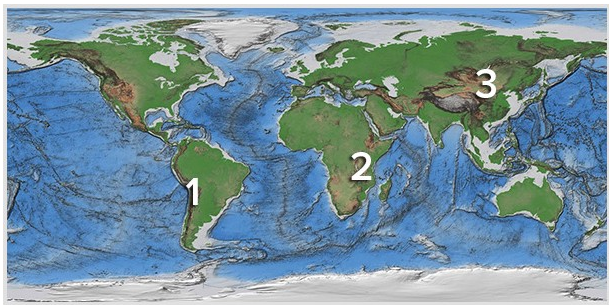A fault zone that is known for a lot of big and small earthquakes goes suddenly quiet for 10 years. This quiet period in an otherwise active fault zone is called a seismic gap. Explain why seismic gaps are pretty good indicators that an area may soon have a moderate or large earthquake. (Hint: Think of strain in rocks.)
What will be an ideal response?
The history of activity suggests that this is a geologically active area with a great deal of rock movement underground. The previous quakes have released the strain in the rocks as it has built up. The seismic gap indicates that sections of rock have been stuck together for some time without slipping and releasing strain. Like a deformed spring, the rocks are storing energy. As the rock continues to deform without slipping, the stored energy grows. When friction lets go, the rock could slip-an earthquake.
You might also like to view...
Which of these regions is high because of a continental collision?

A) 1, Andes of South America
B) 2, East Africa Rift
C) 3, Tibet
D) None of these are correct.
The submerged outer edge of a continent is called:
A) a continental shelf B) a continental margin C) an active margin D) a continental rise
Freezing rain requires that: a. the surface is colder than the air immediately above
b. the surface is warmer than the air immediately above. c. air temperatures must be above freezing at all altitudes. d. air temperatures must be below freezing at all altitudes.
What happens at an oil refinery?
A) Oil is separated into its component compounds. B) Oil is microfiltered to remove small dirt and rock particles. C) Oil is heated to high temperatures to evaporate off harmful impurities such as radon. D) Oil is made more viscous by evaporating off most of the water. E) Oil is turned into a cleaner-burning material called synfuel.